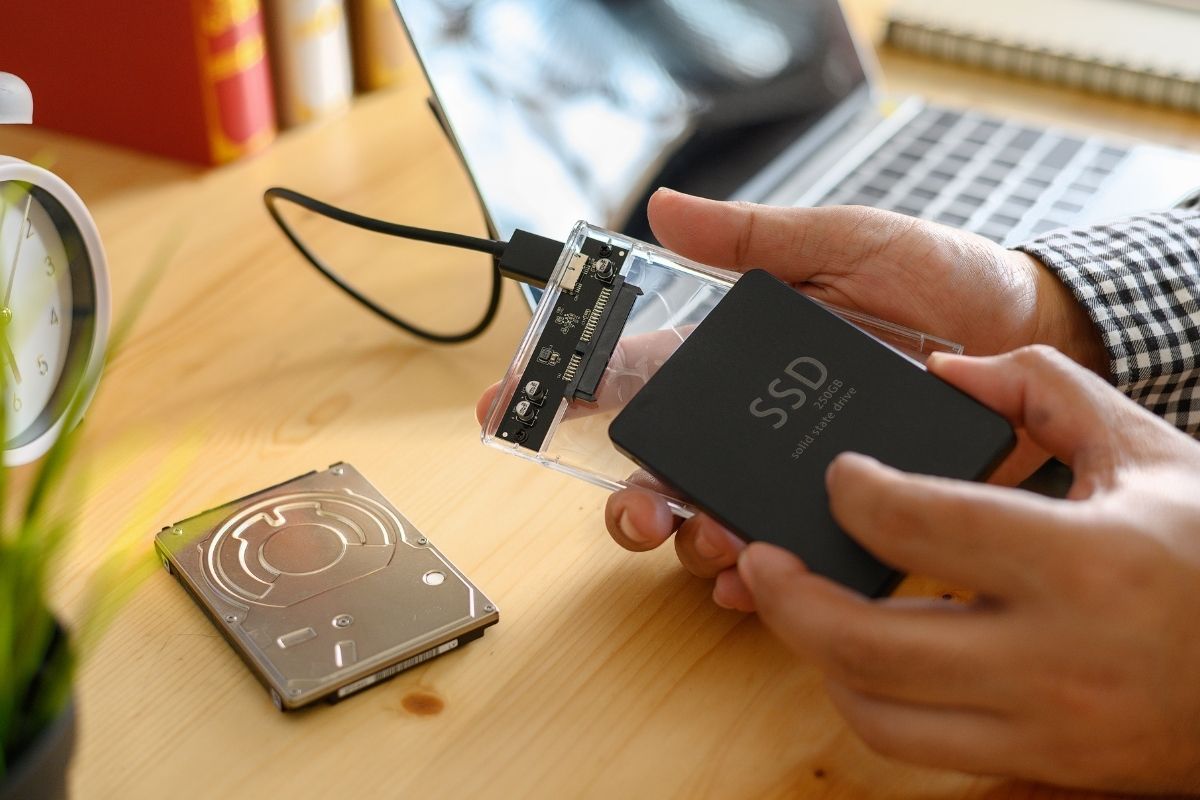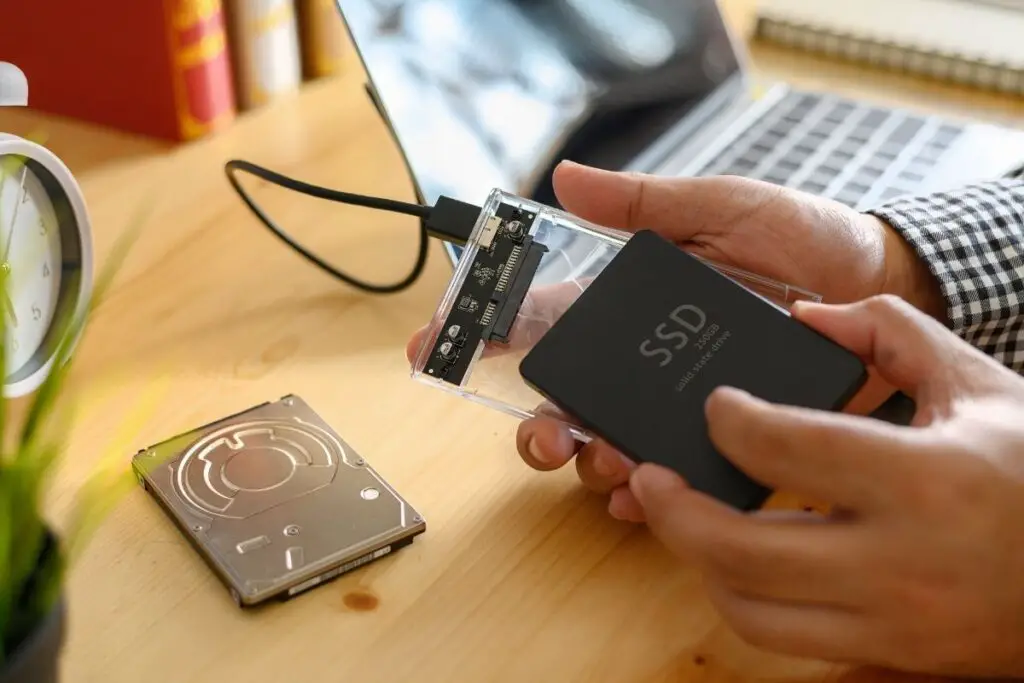What is SSD Trim? Should you worry?

SSD TRIM is a command that helps manage the way data is stored on an SSD. When a file is deleted, TRIM helps ensure that the space it occupied on the drive is actually freed up instead of just being marked as free. Trim is used to inform the SSD that certain areas hold data that is no longer required.
In the absence of the Trim command (as was the case before Windows® 7), the solid-state drive would not be able to recognize that some sectors in the drive contain invalid information until the computer prompted the drive to write new information. In order for the new information to be written, the existing information would need to be erased.
This process takes a little more time than simply writing the new information, so the use of Trim and Active Garbage Collection will help your SSD to perform write commands more efficiently.
Does SSD Trim actually increase the lifespan?
SSD Trim is a feature that is designed to increase the lifespan of an SSD by improving garbage collection. When data is written to an SSD, it is stored in cells. Over time, these cells can become full of old, unused data, which slows down the SSD and decreases its lifespan. Trim helps to solve this problem by erasing old data and making it available for reuse.
While Trim is not required for SSDs to function properly, it can definitely help to improve their longevity. In fact, some manufacturers include Trim support as one of the main selling points of their drives. So, if you’re looking to get the most out of your SSD, be sure to enable Trim.
Is SSD Trim enabled by default?
While Trim is beneficial, it is not absolutely necessary. Some operating systems do not support Trim, but this does not necessarily mean that the drive will not work properly. SSD manufacturers design and test their drives assuming that Trim will not be used, so it is not essential for the drive to function properly.
Trim is enabled by default on most modern SSDs, but if you’re running an old operating system (like Windows XP), or your machine doesn’t support TRIM for some other reason, then it’s possible to turn off the feature in order to get good performance out of your drive. We recommend leaving trim turned on because SSDs don’t suffer from the same performance degradation that HDDs do.
If you looking for Crucial SSDs all of their products come with TRIM technology enabled. I have written an in-depth article regarding Crucial SSDs. You can check it at Crucial SSD: What Is It and How Good Is It for Gaming?
Is SSD TRIM necessary?

It is not essential but it is useful. If you are using a computer for business or work, then it may be beneficial to enable SSD Trim on your Solid State Drive (SSD). Please understand that if the driver does not support TRIM, enabling it will have no effect whatsoever. The more accurate statement would be: “if the operating system running on an SSD supports TRIM, then it may be beneficial to enable SSD Trim on your Solid State Drive.”
The technology behind an SSD is different from the technology used in a standard hard drive. The storage medium of choice for an HDD (Hard Disk Drive) is magnetic platters that spin at incredibly high speeds and are read/written by mechanical arms. The storage medium of choice for an SSD is NAND flash memory similar to the technology used in USB drives and SD cards.
The primary difference between HDD platters and SSD NAND cells is that while HDD platters can physically wear out over time, no physical degradation occurs with an SSD until after its write/erase cycles exceed the ability of the NAND’s endurance rate. At this point, the drive will either start to return read errors or become completely inaccessible and require replacement.
If your computer supports TRIM, then it is possible that if you delete a file on an SSD, the actual data remains on the storage medium until another write command overwrites that specific area of memory (similar to HDD’s). This helps the SSD gain some performance back over time. If an OS does not support TRIM, then writing to previously used areas of storage will act like any other hard drive and cause write amplification (the percentage increase in the size of data written) which results in slower speeds for both reads and writes.
If you are using your computer for business and work and you don’t mind spending a few extra dollars on an SSD, then it may be worth the small investment to get one that supports TRIM. If your computer does not support TRIM at all or if you are using your machine purely for personal use, then there is no real need to enable SSD Trim.
Is it possible to recover lost data from an SSD with TRIM?
While it is possible to recover deleted data from a traditional hard drive, the same is not true for Solid State Drives (SSDs) that have the TRIM feature enabled. When data is deleted from an SSD with TRIM enabled, the data is immediately and permanently overwritten. This makes it impossible to recover the data, as it no longer exists.
While this may seem like a drawback of SSDs, it is actually a benefit. By immediately overwriting deleted data, SSDs are able to maintain their performance and longevity. In contrast, hard drives can suffer from reduced performance over time as deleted data accumulates and fragments the drive. For this reason, TRIM is an essential feature of SSDs and one of the key reasons why they are becoming increasingly popular.
Is SSD TRIM harmful?
Absolutely no. SSD Trim is an important feature that helps prolong the life of SSDs. It’s one of many features that make SSDs better than traditional HDDs when it comes to performance and reliability.
If you have a laptop or desktop running Windows and your SSD supports SATA TRIM (all modern models do), then there’s no reason to turn it off – it only slows things down for desktops that don’t use an OS with native support, like Ubuntu Linux or macOS.
Trim is enabled by default in Windows, but if you’re using a third-party SSD tool like Samsung Magician, make sure it’s turned on. If your OS doesn’t support Trim at all (like Linux) or the drive isn’t compatible with SATA TRIM, then don’t turn it on – doing so could actually decrease performance.
Conclusion
Trim is a process by which an SSD can find and erase deleted files, freeing up space on the drive so you can continue to write new data. Without TRIM, your SSD would quickly fill up with deleted files and become unusable.
Trim is important for both performance and long-term drive health. Additionally, without TRIM enabled your SSD will quickly become filled with deleted files and eventually become unusable.
Enable trim on your SSD to keep it performing well and lasting as long as possible!
References
- Data recovery and the SSD TRIM Feature: https://www.dataclinic.co.uk/data-recovery-and-the-ssd-trim-feature
